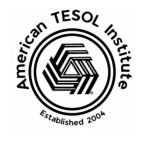As TESOL teachers, understanding your students’ unique ways of learning can transform your classroom into an engaging and effective space. Students absorb information in different ways, and when you match your teaching methods to their learning styles, you create a path for success. Let’s explore six major learning styles—Visual, Auditory, Tactile, Kinesthetic, Analytic, and Global—and learn how to tailor lessons for each type while keeping it fun and interactive!
1. Visual Learners: Seeing is Believing
Visual learners rely on their eyes to absorb information. They understand concepts best when presented with charts, diagrams, videos, and visuals. These students love seeing information organized in a clear and colorful way.
Techniques for Visual Learners:
- Use mind maps or flowcharts to explain grammar rules or vocabulary.
- Incorporate flashcards for spelling and definitions.
- Show videos or slides with subtitles to connect listening and reading skills.
- Use color-coding to highlight parts of speech or sentence structures.
Fun Fact: Visual learners remember about 75% of what they see, so a simple picture or graphic can be worth a thousand words!
2. Auditory Learners: The Power of Listening
Auditory learners process information best through listening and speaking. They thrive on discussions, lectures, podcasts, and repetition. These students often love storytelling and music-based activities.
Techniques for Auditory Learners:
- Use songs, chants, and rhymes to teach pronunciation or tricky vocabulary.
- Play audio recordings of conversations or storytelling.
- Have students engage in peer discussions or debates.
- Use listen-and-repeat drills for phonics and speaking practice.
Fun Fact: Auditory learners often have a talent for picking up accents quickly because they pay close attention to the rhythm and sounds of speech.
3. Tactile Learners: Hands-On Learning
Tactile learners love to touch, feel, and interact with materials. These students learn by doing and benefit from practical, hands-on activities. Worksheets, building activities, and manipulatives work wonders for them.
Techniques for Tactile Learners:
- Use letter tiles or cut-outs to build words and sentences.
- Provide worksheets for matching games, puzzles, and sorting tasks.
- Incorporate craft activities, like making vocabulary posters or foldable books.
- Create interactive projects where students “build” stories or sentence structures.
Fun Fact: The word tactile comes from the Latin word tactilis, which means “to touch”—exactly how these learners prefer to process information!
4. Kinesthetic Learners: Move to Learn
Kinesthetic learners thrive when they can move, act, and physically engage with lessons. Sitting still for long periods is a challenge, so movement-based activities help them absorb material while staying focused.
Techniques for Kinesthetic Learners:
- Use Total Physical Response (TPR), where students act out verbs or vocabulary.
- Play classroom games like “Simon Says” or scavenger hunts.
- Allow students to walk around and complete interactive stations.
- Incorporate role-playing activities to practice real-life English scenarios.
Fun Fact: Kinesthetic learners may often “fidget” when learning because physical activity boosts their ability to retain and recall information.
5. Analytic Learners: Detail-Oriented Thinkers
Analytic learners prefer structure, details, and logical steps. They thrive on grammar charts, patterns, and systematic learning activities.
Techniques for Analytic Learners:
- Teach grammar rules explicitly and provide practice drills.
- Break down sentences using diagrams or parsing exercises.
- Provide step-by-step instructions for writing tasks.
- Use problem-solving activities like decoding riddles or logic-based games.
Fun Fact: Analytic learners love finding patterns, which makes them particularly skilled at learning grammar tenses or spotting irregular verbs.
6. Global Learners: The Big Picture Enthusiasts
Global learners focus on concepts rather than details. They see how ideas connect and prefer real-world contexts and storytelling to understand material.
Techniques for Global Learners:
- Use real-life scenarios like planning trips, shopping, or job interviews.
- Incorporate storytelling to teach new vocabulary or grammar.
- Start with the big picture—give students context first, then break down the details.
- Use project-based learning (PBL) where students work on tasks that connect to their interests.
Fun Fact: Global learners are great at making connections between language and culture, often excelling in immersion-style learning environments.
Mix and Match for Success
While students may lean toward one learning style, many benefit from a mix of approaches. The key is to observe and adapt—use a variety of activities to engage all learners in your classroom. For example:
- Combine visuals and listening skills with a video story.
- Pair kinesthetic activities with analytic breakdowns—like acting out verbs while analyzing their forms.
- Integrate hands-on tasks (tactile) into real-world projects (global).
By understanding and incorporating these learning styles into your TESOL lessons, you can keep your students engaged, motivated, and eager to learn.
Final Thought:
Teaching English is an art, and learning styles are your palette. By blending visuals, sounds, movement, and logic, you’ll create a vibrant, inclusive classroom that celebrates every learner’s strengths. So, mix it up, have fun, and watch your students thrive as they learn English—one unique style at a time!
Review six learning styles and how to implement them into a diverse class.




